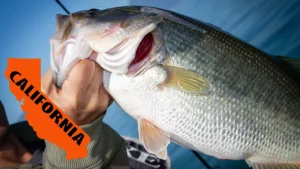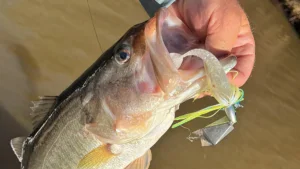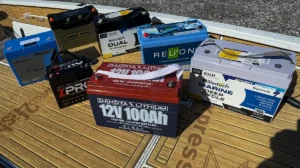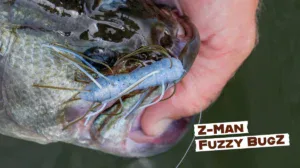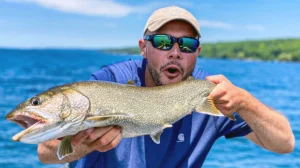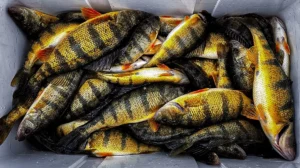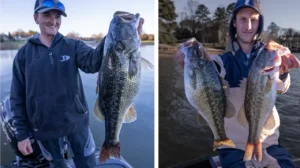Companies are now creating bass fishing baits specifically designed to be be tracked easier and show up better on forward-facing sonar. This overarching theme emerging from the 2022 ICAST trade show was brought to my attention by our very own Walker Smith and it peaked my interest. So I reached out to longtime forward-facing sonar enthusiast and smallmouth specialist Ben Nowak to take a look at this topic through his eyes.
A little backstory on Nowak, he was the first to ever introduce me to forward-facing sonar about 4 years ago. I saw him posting pics of dozens of giant smallmouth; catches he credited to the then-cutting edge Panoptix technology from Garmin, which was the first generation of their forward-facing sonar.
So he drove down and I drove up to Guntersville. I got in the boat with him and he quickly graphed down a ledge where he spotted a few clumps of hydrilla. He told me to get on the trolling motor, I clumsily fumbled around with the foot pedal until I spotted a ball of grass and got within casting distance. I chucked a Rat-L-Trap in the direction of the grass and about the second time I ripped my bait free, a 6-pounder annihilated it.
I was immediately hooked on this new tech and Ben Nowak instantly became my forward-facing sonar go-to expert from that day forward. So who better to call to discuss this topic?
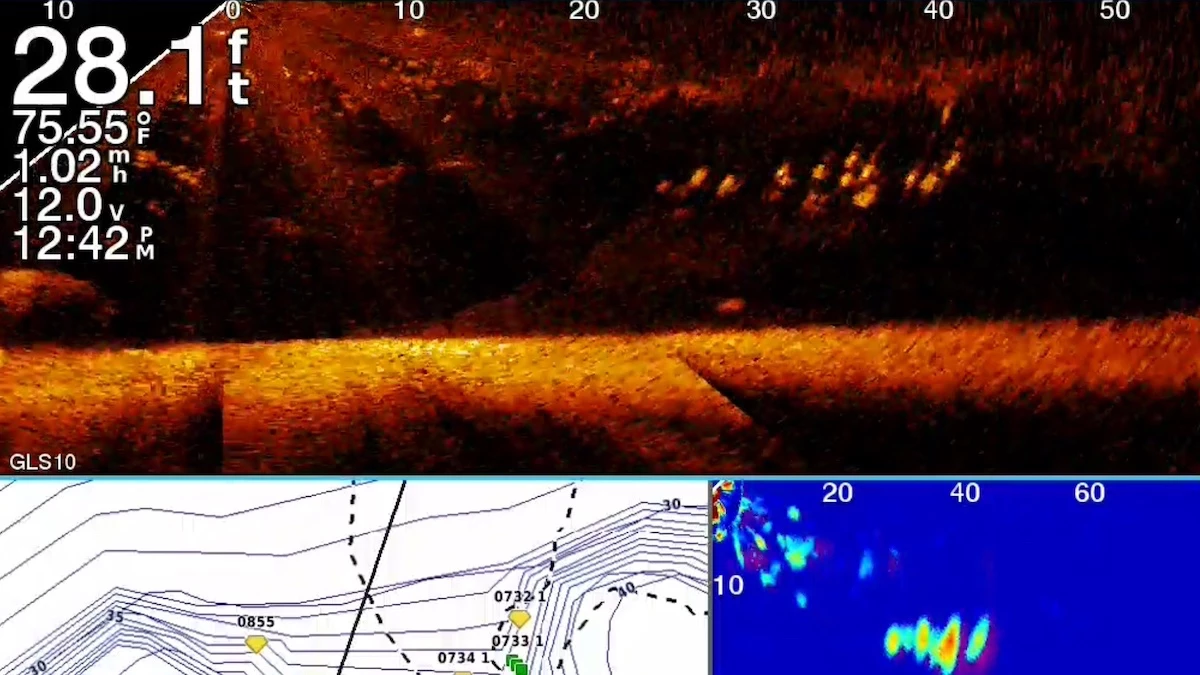
The idea
“It’s an interesting topic,” Nowak said. “It’s something I’ve been trying to figure out, too. What can I use effectively to not only show on Garmin Livescope for me but also what is a good rotation of baits I can throw and catch fish on with Livescope.”
There are several things that go into being able to see a bait well on forward-facing sonar, though Nowak stresses that fine tuning your graph first is an absolute necessity.
“If you get your Livescope dialed in, you can get a lot of stuff to show up at 60 feet, especially if you’re on it.”
But once you start looking for your bait beyond 60 feet, it can start to get a little hit or miss. There are three main criteria at that range that Nowak starts to really pay attention to in order to help him see his bait. He makes his selection based on the rate of fall of the lure, what the bait is made of and the bait’s overall size.
“I think that’s why you’ve seen an A-Rig be so popular over the last three or four years,” Nowak said. “But even though it’s huge and it shows up well, for me it isn’t a bait I use a lot because it just doesn’t catch them as well.”
Instead of going with the obvious umbrella rig, Nowak has developed a three-bait rotation that shows up well on his graph, that he can track well and one which consists of lures that are effective at drawing strikes from fish that are growing continually more weary.
“My top three are a jerkbait, a drop shot and a ball-head swimbait.”
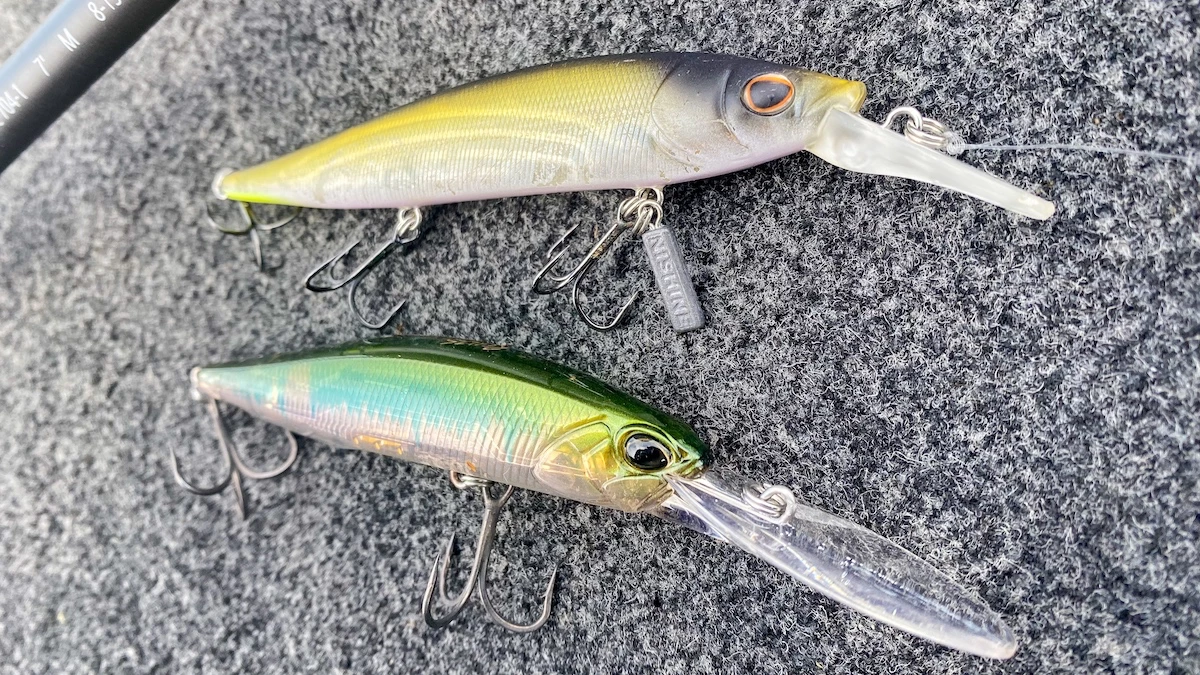
Jerkbait
“A jerkbait is number one for me, easy,” Nowak said. “The biggest thing is being able to control the rate of fall of your bait. And it’s so easy to do that with a jerkbait.”
By rate of fall, Nowak is referring to the speed at which a bait sinks through the water column. Most jerkbaits are designed to float or at least suspend straight out of the pack, but by changing the hooks, the split rings or even adding a little weight to a jerkbait, Nowak is able to get his bait to sink.
“I don’t want a jerkbait that I have to work to get down to depth, I want it to sink,” Nowak said. “The Berkley Stunna Jerkbait sinks out of the box. So that’s the bait that I’ve been throwing a lot lately and I’ve caught a lot of fish on it over the last year.”
For jerkbaits that naturally float or suspend, Nowak uses a Nishine Lure Works Original Outer Weight that he can cut down to size using pliers to get a jerkbait to suspend or fall at a precise speed. Nowak can then cast his bait out and watch it fall on his graph until it reaches the target depth where the bass are suspending.
“The other thing too, there are certain jerkbaits that show up a lot better. I think the reason a lot of guys are using the Duo Realis Jerkbait is because it’s a big flat-sided bait that shows up well on Livescope. It also has a tungsten ball in the head of the bait, which I’m a big believer that the tungsten is so dense that it shows up better.”
Pairing the Nishine Outer Weight with the Duo Realis jerkbait, Nowak has a lure that sinks and shows up well, thanks to its larger profile and the density of the tungsten used in the lure’s design.
“And it doesn’t have a ton of side-to-side movement (so it’s easy to follow with his graph), plus it catches fish.”
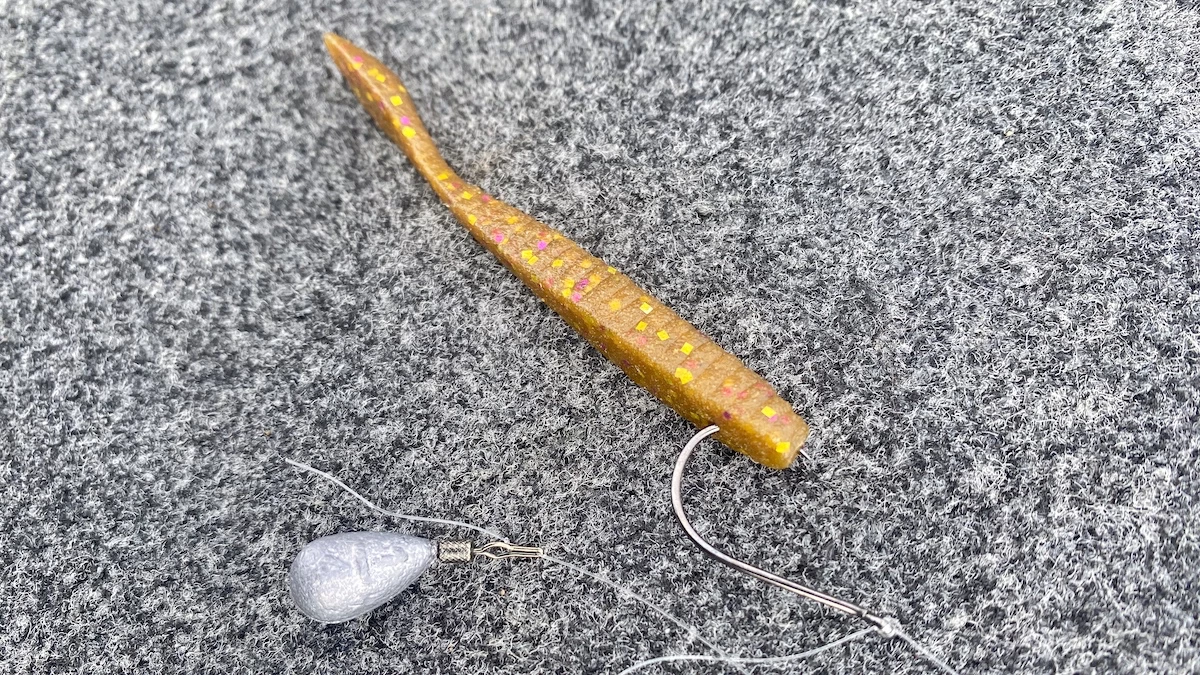
Drop shot
“I think a drop shot is the most underrated technique for Livescoping,” Nowak said. “It shows up really well, it falls super straight and it’s a bait that has a long presence in the water.”
Because a drop shot consists of a weight and a worm that are typically separated by a foot or so of drop leader, this presentation has a large profile in the water and thus returns a large signature to Nowak’s graph. So it’s easy to find when panning for it on the fall.
“For a drop shot, I’ll use the lightest weight I possibly can to get it to go to the bottom and stay on bottom.”
Because a bigger profile is typically better and density is important when it comes to how a bait shows up on forward-facing sonar, it seems like a ball-shaped tungsten weight would be the obvious selection. But Nowak advises against this for a few reasons. Namely, the overall profile of the presentation is plenty large enough to help you see the bait. But tungsten is also costly and the ball shaped tungsten isn’t the most weedless option.
“I throw a tear drop because it’s the best cross over shape between the two (cylindrical and ball shaped). If you’re a big believer that tungsten shows up better, you can play with that, but I just lose so many.”
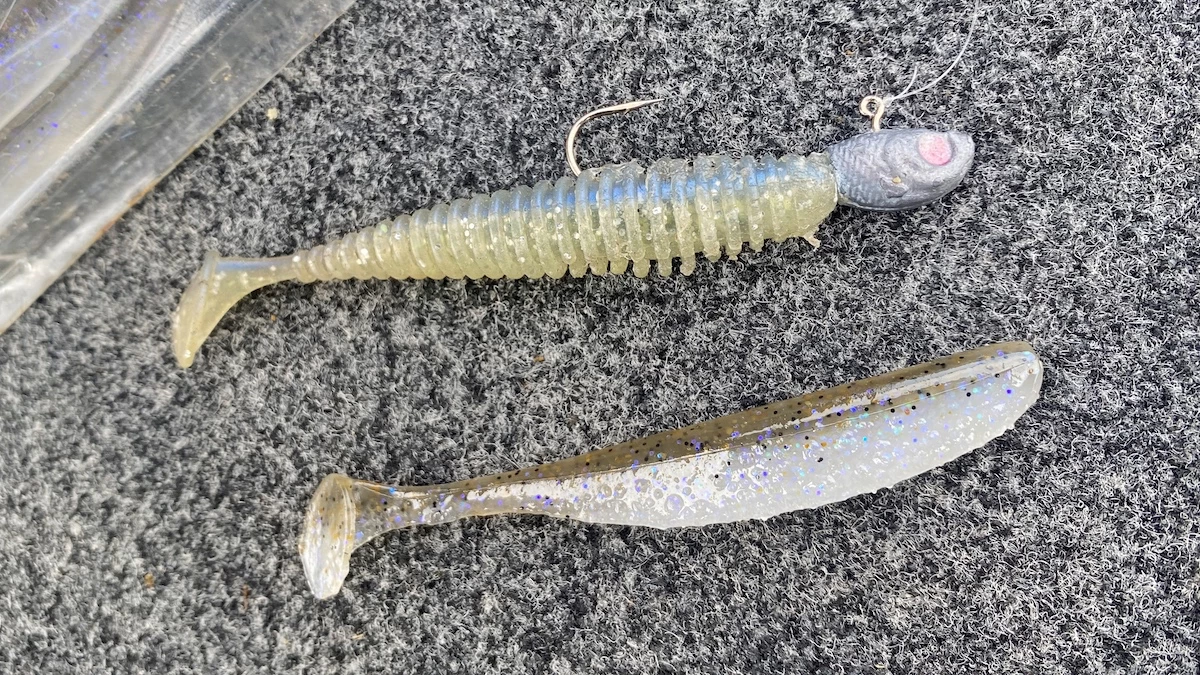
Swimbait
“I throw a swimbait a lot,” Nowak said. “I like a 3 1/2-inch swimbait on a ball head.”
A swimbait rounds out Nowak’s top three because it gets bit, he’s able to control the rate of fall and the bait has a slow and steady rate of return as well, which makes it easy for him to follow with his forward-facing sonar.
“I like to go with a 90-degree line tie because I can control the bait a lot better. It makes a huge difference between that and like a 60-degree line tie head where it just wants to pull forward a lot faster.”
The size varies for Nowak, but as light as possible is key.
“A lot of times I’ll start with an 1/8-ounce and work my way up to no more than about a 3/8-ounce, because I want that bait to sink but I want to have control over it.”
Part of the effectiveness of a swimbait like this for targeting fish on forward-facing sonar is that the bait has a nice vertical fall. This straight fall gives Nowak a lure that he can cast just beyond a fish he sees on his graph, watch the bait fall to the desired depth and then begin to retrieve it right by the bass.
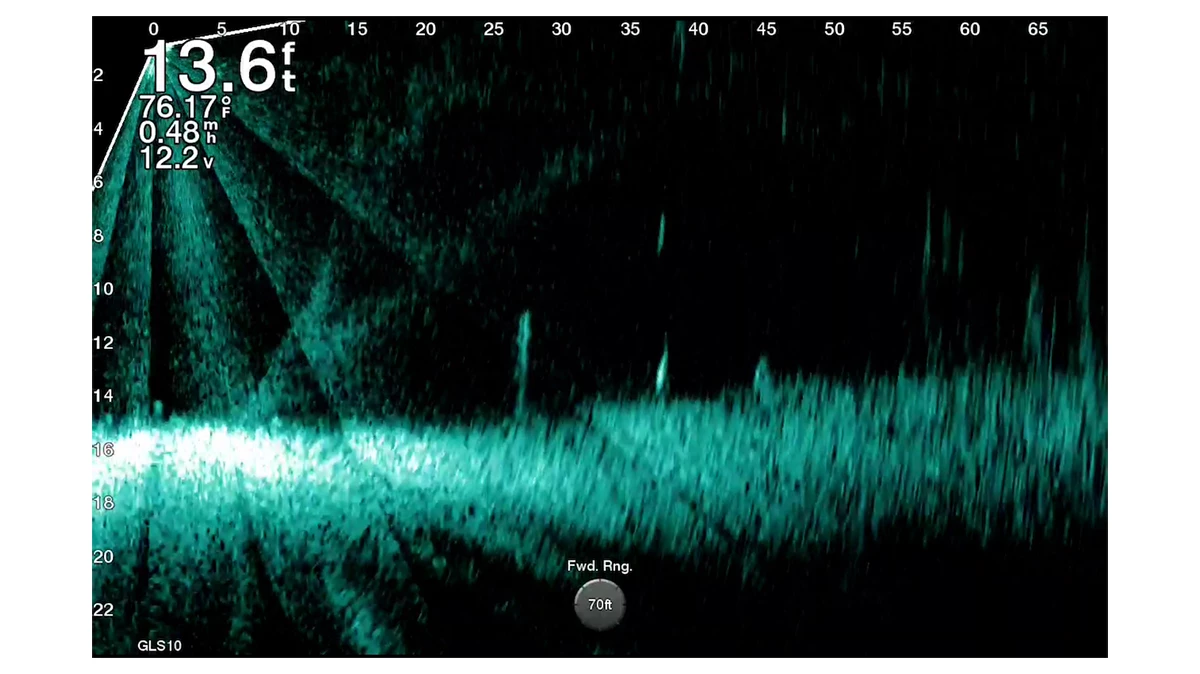
A shift in focus
Nowak saw early on and first hand the effectiveness of forward-facing sonar as he began to evolve and adapt his fishing style to it more than five years ago. Because of the early success he saw using this new technology, he was surprised it took the outside world so long to catch on.
“I can’t tell you how many tournaments Jason Christie won and credited Panoptix for it and people just kind of blew it off,” Nowak said.
Christie saw what Nowak saw. Now the cat has long since been out of the bag. The big players in the sonar industry have obviously shifted their focus the last couple of years to forward-facing technology, but seeing the other companies in the industry starting to follow suit excites Nowak.
“It’s cool to see companies start to focus some marketing dollars and some research dollars into how to make baits work better for it.”
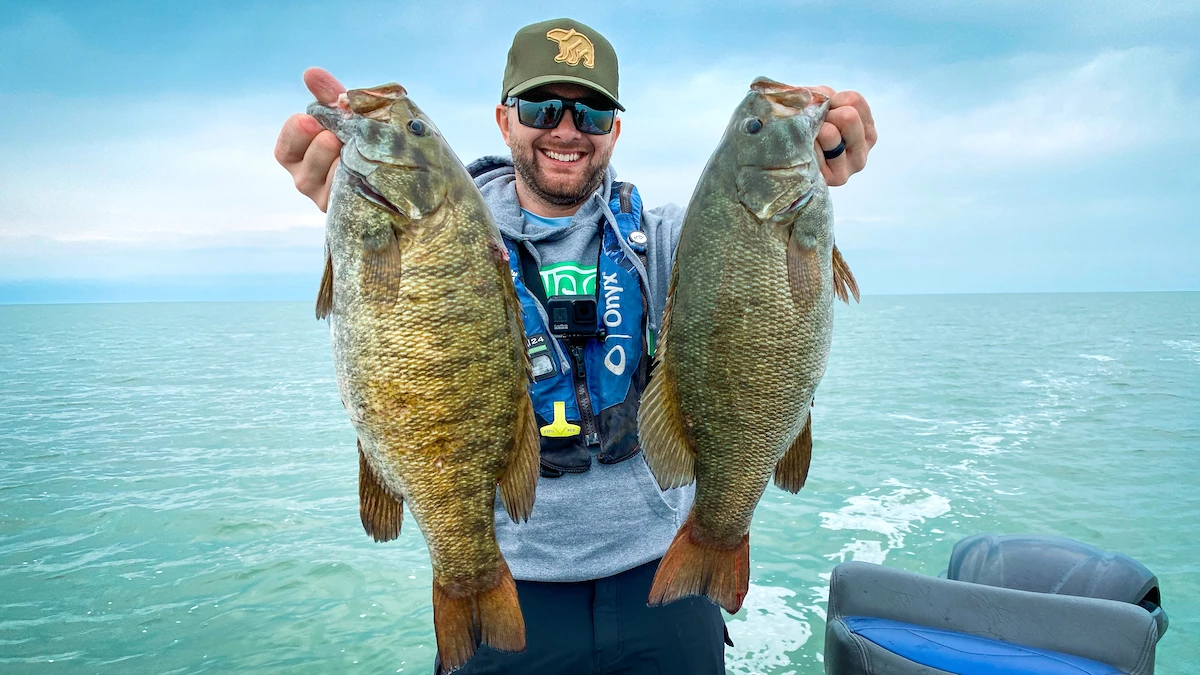
What would Nowak like to see next?
“I think the concept of using tungsten to make baits show up better is really neat,” Nowak said. “I would love to see a company figure out a way to make a bait stall in the water column. Which is something I’ve been trying to figure out.”
Regardless of what comes next, it’s an absolute certainty at this point that there’s a lot on the horizon for this technique. The picture will continue to get clearer somehow, whether that has to do with the sensitivity of the technology or the design of the lures. And the area of refuge for those little green and brown fish we all like to chase will continue to shrink.


